Filter by
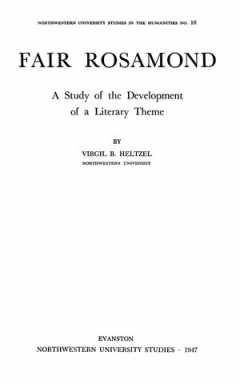
Fair Rosamond : A Study of the Development of a Literary Theme
In Fair Rosamond, Virgil B. Heltzel traces the character of Rosamond Clifford, known as Fair Rosamond - which has its origins as a theme in medieval literature -through its use in poetry and plays and novels, from the Renaissance through the early twentieth century. Heltzel’s book retains its importance today for scholars tracing certain thematic structures through all periods of literature.
- Edition
- -
- ISBN/ISSN
- 9780810138452
- Collation
- -
- Series Title
- -
- Call Number
- 370 HEL f
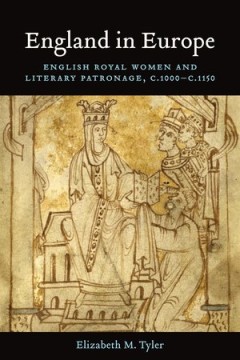
England in Europe : English Royal Women and Literary Patronage, c.1000-c.1150
In England in Europe, Elizabeth Tyler focuses on two histories: the Encomium Emmae Reginae, written for Emma the wife of the Æthelred II and Cnut, and The Life of King Edward, written for Edith the wife of Edward the Confessor.Tyler offers a bold literary and historical analysis of both texts and reveals how the two queens actively engaged in the patronage of history-writing and poetry to e…
- Edition
- -
- ISBN/ISSN
- 9781442640726
- Collation
- -
- Series Title
- -
- Call Number
- 800 TYL e

Challenging Communion : The Eucharist and Middle English Literature
In this book, Jennifer Garrison examines literary representations of the central symbol of later medieval religious culture: the Eucharist. In contrast to scholarship that depicts mainstream believers as enthusiastically and simplistically embracing the Eucharist, Challenging Communion: The Eucharist and Middle English Literature identifies a pervasive Middle English literary tradition that rej…
- Edition
- -
- ISBN/ISSN
- 9780814213230
- Collation
- -
- Series Title
- -
- Call Number
- 800 GAR c
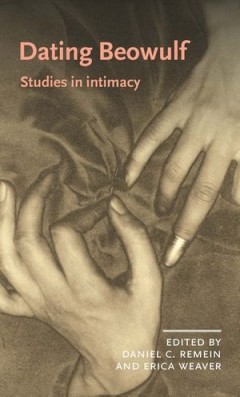
Dating Beowulf : Studies in intimacy
Featuring essays from some of the most prominent voices in early medieval English studies, Dating Beowulf: studies in intimacy playfully redeploys the word ‘dating’, which usually heralds some of the most divisive critical impasses in the field, to provocatively phrase a set of new relationships with an Old English poem. This volume presents an argument for the relevance of the early Middle…
- Edition
- -
- ISBN/ISSN
- 9781526136442
- Collation
- 344 halaman
- Series Title
- Manchester Medieval Literature and Culture
- Call Number
- 800 DAT

As If : Essays in As You Like It
Shakespeare’s As You Like It is a play without a theme. Instead, it repeatedly poses one question in a variety of forms: What if the world were other than it is? As You Like It is a set of experiments in which its characters conditionally change an aspect of their world and see what comes of it: what if I were not a girl but a man? What if I were not a duke, but someone like Robin Hood? What …
- Edition
- -
- ISBN/ISSN
- 9780615988177
- Collation
- -
- Series Title
- -
- Call Number
- 800 WES a
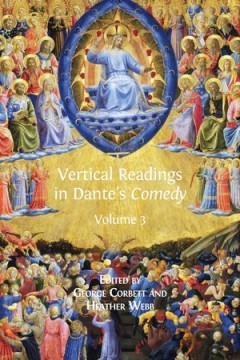
Vertical Readings in Dante's 'Comedy': Volume 3
Vertical Readings in Dante’s Comedy is a reappraisal of the poem by an international team of thirty-four scholars. Each vertical reading analyses three same-numbered cantos from the three canticles: Inferno i, Purgatorio i and Paradiso i; Inferno ii, Purgatorio ii and Paradiso ii; etc. Although scholars have suggested before that there are correspondences between same-numbered cantos that beg…
- Edition
- -
- ISBN/ISSN
- 9781783743605
- Collation
- -
- Series Title
- -
- Call Number
- -
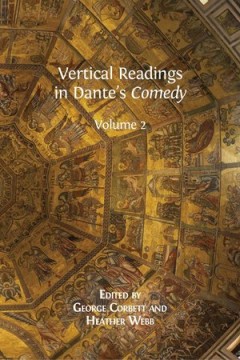
Vertical Readings in Dante's 'Comedy': Volume 2
Vertical Readings in Dante’s Comedy is a reappraisal of the poem by an international team of thirty-four scholars. Each vertical reading analyses three same-numbered cantos from the three canticles: Inferno i, Purgatorio i and Paradiso i; Inferno ii, Purgatorio ii and Paradiso ii; etc. Although scholars have suggested before that there are correspondences between same-numbered cantos that beg…
- Edition
- -
- ISBN/ISSN
- 9781783742554
- Collation
- -
- Series Title
- -
- Call Number
- -

Vertical Readings in Dante's Comedy: Volume 1
Vertical Readings in Dante’s Comedy is a reappraisal of the poem by an international team of thirty-four scholars. Each vertical reading analyses three same-numbered cantos from the three canticles: Inferno i, Purgatorio i and Paradiso i; Inferno ii, Purgatorio ii and Paradiso ii; etc. Although scholars have suggested before that there are correspondences between same-numbered cantos that beg…
- Edition
- -
- ISBN/ISSN
- 9781783741748
- Collation
- -
- Series Title
- -
- Call Number
- -
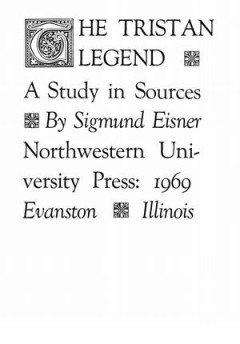
The Tristan Legend: A Study in Sources
Tristan und Isolde (Tristan and Iseult) remains one of the most popular romances ever written. Although the tale was believed to have originated in Germany, bards in France and Britain composed their own versions of the story, a tale of adultery, betrayal, mistaken identity, and thwarted love. In The Tristan Legend, Sigmund Eisner offers a study of the sources of the Tristan romance, tracing th…
- Edition
- -
- ISBN/ISSN
- 9780810138353
- Collation
- -
- Series Title
- -
- Call Number
- -

The Retro-Futurism of Cuteness
Is it possible to conceive of a Hello Kitty Middle Ages or a Tickle Me Elmo Renaissance? The Oxford English Dictionary dates the first reference to “cute” in the sense of “attractive, pretty, charming” to 1834. More recently, Sianne Ngai has offered a critical overview of the cuteness of the twentieth-century avant-garde within the context of consumer culture. But if cuteness can get un…
- Edition
- -
- ISBN/ISSN
- 9781947447288
- Collation
- -
- Series Title
- -
- Call Number
- -
 Computer Science, Information & General Works
Computer Science, Information & General Works  Philosophy & Psychology
Philosophy & Psychology  Religion
Religion  Social Sciences
Social Sciences  Language
Language  Pure Science
Pure Science  Applied Sciences
Applied Sciences  Art & Recreation
Art & Recreation  Literature
Literature  History & Geography
History & Geography